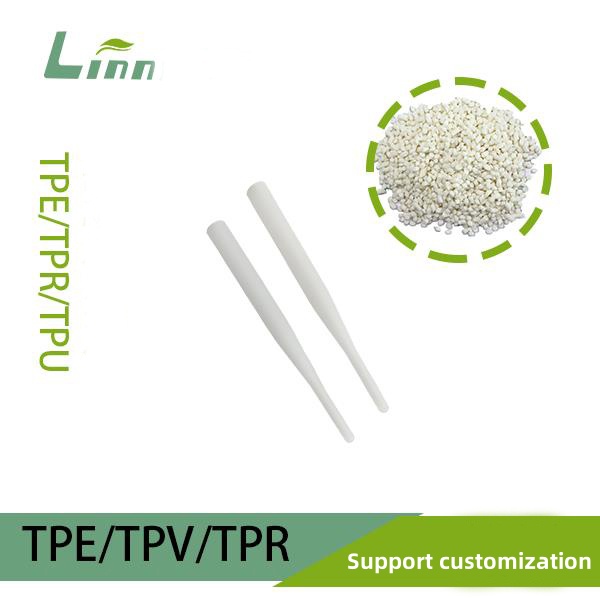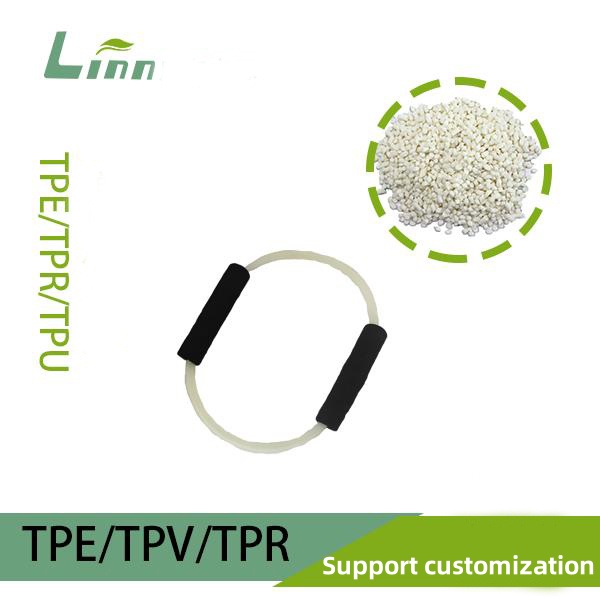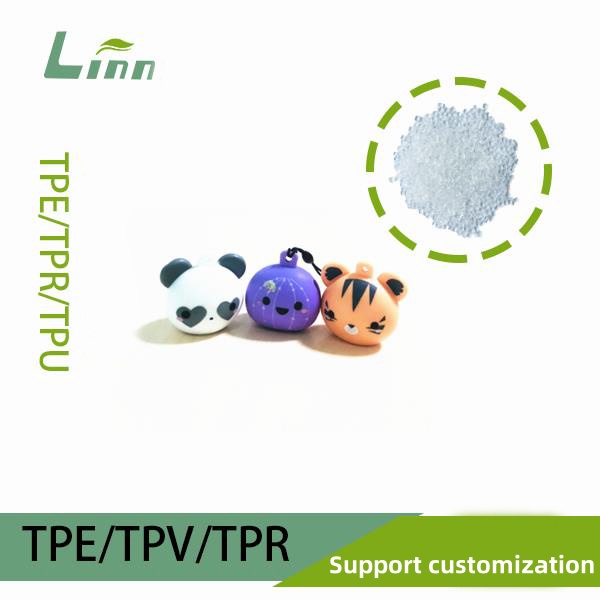TPE (Thermoplastic Elastomer) elastomer materials are widely used in various fields such as automotive, electronics, medical, toys, and household items due to their unique rubber-like elasticity and plastic processing properties. In these applications, transparency is often an important consideration factor, especially in products that require displaying internal structures or pursuing aesthetic appearances. What factors exactly affect the transparency of TPE elastomer materials? This article will analyze this issue in detail for you.
I. Basic Concept of TPE Elastomer Material Transparency
Transparency refers to the degree to which a material allows light to penetrate. For TPE elastomer materials, transparency not only affects the appearance quality of products but may also have an impact on their performance. In the medical field, transparent TPE materials can facilitate doctors’ observation of the internal structure of instruments; in the toy field, transparent TPE materials can attract children’s attention and increase the fun of toys.
II. Factors Affecting the Transparency of TPE Elastomer Materials
1. Selection of Raw Materials
(1) Rubber Base Material
The rubber base material of TPE elastomer materials is one of the key factors affecting its transparency. Common rubber base materials include SEBS (Styrene-Ethylene/Butylene-Styrene Block Copolymer) and SBS (Styrene-Butadiene-Styrene Block Copolymer), etc. TPE materials with SEBS base material have higher transparency, while TPE materials with SBS base material have relatively lower transparency. The molecular weight, branching degree, etc. of the rubber base material will also affect its transparency. The higher the molecular weight, the more likely the molecular chains are to entangle and form scattering centers, thereby reducing transparency; the higher the branching degree, the more complex the molecular chain structure, which is also likely to cause light scattering and reduce transparency.

(2) Processing Oil
Processing oil is an important additive in TPE elastomer materials, used to adjust the hardness and processing performance of the material. The quality, type, and amount of processing oil will all affect the transparency of TPE materials. Choosing oils with high hydrogenation degree (such as three-time hydrogenation) is conducive to improving the transparency of TPE materials, because these oils have good compatibility with the polymer matrix, can promote uniform dispersion, and reduce light scattering. An appropriate amount of oil can soften the polymer matrix, reduce hardness, and thus improve transparency. However, it should be noted that excessive oil addition may lead to plastic deformation, which will instead reduce transparency.
(3) Resin Additives
In order to improve tWhat factors affect the transparency of TPE elastomer materials?he strength, hardness, or other properties of TPE elastomer materials, a certain amount of resin additives, such as PS (Polystyrene) or PP (Polypropylene), are usually added to the compounding system. The amount, specification, and origin of these resin additives will all affect the transparency of TPE materials. As the amount of PS or PP increases, the hardness of TPE materials will increase accordingly, but the transparency will gradually decrease. This is because the addition of these resin additives changes the structure of the polymer matrix and increases light scattering. Especially for TPE with SEBS base material, the transparency decrease after adding additives is more obvious compared to TPR with SBS base material.
2. Processing Technology
(1) Screw Cleaning
Before injecting transparent TPE products, screw cleaning is an indispensable step. Impurities in the screw barrel, such as residual color powder, fillers, or other types of plastics, etc., will affect the transparent effect of TPE products and may even cause defects such as black spots and white spots in the products. It is necessary to use low-hardness transparent TPE material to clean the screw multiple times to ensure that the screw barrel is clean and free of impurities.

(2) Plasticizing Effect
The plasticizing effect is another important factor affecting the transparency of TPE elastomer materials. If the plasticization is poor, the product will appear white and opaque. TPE is a blended material, and different models may have different plasticizing temperatures. The plasticizing temperature of transparent TPE may range within a large interval such as 130 – 230°C. During the production process, it is necessary to strictly control the plasticizing temperature to ensure that the TPE material is fully melted and mixed to obtain a good plasticizing effect.
(3) Injection Temperature, Pressure, and Time
Parameters such as injection temperature, pressure, and time will also affect the transparency of TPE elastomer materials. The higher the injection temperature, the better the fluidity of the TPE material, which is conducive to eliminating bubbles and impurities and improving transparency. However, too high a temperature may also cause the TPE material to decompose or oxidize, producing impurities and instead reducing transparency. It is necessary to set the injection temperature reasonably according to the specific characteristics and requirements of the TPE material. Injection pressure affects the filling of the TPE material in the mold. Too low a pressure will lead to insufficient filling, resulting in lack of glue or shrinkage holes; too high a pressure may cause the internal pressure of the product to increase, producing bubbles or bulges, thereby reducing transparency. Injection time also needs to be set reasonably according to the shape and size of the product to ensure that the product is fully cooled and cured.
3. Mold Design
Mold design is also one of the important factors affecting the transparency of TPE elastomer materials. The surface finish, wall thickness, cooling system, etc. of the mold will all affect the transparency of the product. Using a mold surface with high finish can reduce scratches and defects and improve the transparency of the product. The wall thickness of the mold should be moderate. Too thin may lead to insufficient strength of the product and easy deformation; too thick may lead to an increase in the internal pressure of the product, producing bubbles or bulges. The design of the cooling system should be reasonable to ensure that the product can be uniformly cooled and cured in the mold, avoiding a decrease in transparency caused by local overheating or overcooling.

4. Post-treatment
For some TPE material products with high transparency requirements, post-treatment such as annealing treatment can be considered. Annealing treatment can eliminate the residual stress inside the product and improve transparency. However, annealing treatment needs to be carried out under certain temperature and time conditions; otherwise, it may not achieve the expected effect or even have an adverse impact on the product.
5. Other Factors
In addition to the above factors, there are also some other factors that will affect the transparency of TPE elastomer materials. Impurities, moisture, or volatile substances in TPE materials may all lead to a decrease in product transparency. Improper operations during storage and transportation may also have an adverse impact on the transparency of TPE materials. Appropriate measures need to be taken during storage and transportation to protect TPE materials from contamination and damage.
III. How to Improve the Transparency of TPE Elastomer Materials
1. Select High-quality Raw Materials
Selecting high-transparency base materials is the key to improving the transparency of TPE elastomer materials. You should give priority to polymers with low molecular weight and TPE materials with low viscosity as the base material, and carefully select the type and specification of processing oil and resin additives. Ensure the stable and reliable quality of raw materials and avoid using raw materials containing impurities, moisture, or volatile substances.
2. Optimize Processing Technology
Optimizing processing technology is also one of the important measures to improve the transparency of TPE elastomer materials. You should strictly control parameters such as injection temperature, pressure, and time to ensure that the TPE material is fully melted and mixed. Regularly clean and maintain the screw to ensure that the screw barrel is clean and free of impurities. Advanced technologies such as multi-stage injection speed and pressure control can also be adopted to improve the transparency and quality of products.
3. Improve Mold Design
Improving mold design is also an effective way to improve the transparency of TPE elastomer materials. A mold surface with high finish should be used to reduce scratches and defects; the wall thickness and cooling system of the mold should be reasonably designed to ensure the uniform cooling and curing of the product; structures such as exhaust grooves can also be added to eliminate bubbles and impurities.
4. Carry Out Post-treatment
For some TPE material products with high transparency requirements, post-treatment can be considered to improve their transparency. Annealing treatment is a commonly used post-treatment method, which can eliminate the residual stress inside the product and improve transparency. However, annealing treatment needs to be carried out under certain temperature and time conditions and should be reasonably set according to the specific characteristics and requirements of the product.

5. Strengthen Storage and Transportation Management
Strengthening storage and transportation management is also one of the important measures to protect the transparency of TPE elastomer materials. Ensure that raw materials maintain dry, ventilated, and light-shielded environmental conditions during storage and transportation; avoid adverse factors such as high temperature, low temperature, and vibration having an adverse impact on raw materials; also regularly check the quality and status of raw materials to ensure that they meet production requirements.
IV. Case Analysis
Case 1: TPE Catheter Transparency Improvement Project of a Medical Device Factory
Problem Description: During the use of TPE catheters produced by a medical device factory, it was found that the transparency was insufficient, affecting doctors’ observation of the internal structure of the instrument.
Cause Analysis: After investigation, it was found that the TPE elastomer raw materials used by the medical device factory contained a large number of impurities and moisture; improper setting of processing technology parameters (such as too low injection temperature, insufficient pressure, etc.) also led to a decrease in product transparency.
Treatment Measures: The medical device factory took the following treatment measures: First, replace the supplier of TPE elastomer raw materials with better quality; second, optimize the processing technology parameters (such as increase the injection temperature, increase the injection pressure, etc.); third, improve the mold design (such as add exhaust grooves and other structures).
Treatment Result: After treatment, the medical device factory successfully improved the transparency of TPE catheters, facilitating doctors’ observation of the internal structure of the instrument.
Case 2: TPE Toy Transparency Improvement Project of a Toy Factory
Problem Description: During the use of TPE toys produced by a toy factory, it was found that the transparency was insufficient, affecting the appearance and attractiveness of the toys.
Cause Analysis: After investigation, it was found that the quality of the processing oil in the TPE elastomer raw materials used by the toy factory was poor; incomplete screw cleaning also led to defects such as black spots in the product.
Treatment Measures: The toy factory took the following treatment measures: First, replace the supplier of processing oil with better quality; second, strengthen screw cleaning work to ensure that the screw barrel is clean and free of impurities; third, optimize the injection process parameters (such as adjust the injection speed and pressure, etc.).
Treatment Result: After treatment, the toy factory successfully improved the transparency of TPE toys, increasing the appearance and attractiveness of the toys.
V. Conclusion
The transparency of TPE elastomer materials is affected by various factors, including raw material selection, processing technology, mold design, post-treatment, and other factors. In order to improve the transparency of TPE elastomer materials, you need to conduct comprehensive analysis and solutions from multiple aspects. By selecting high-quality raw materials, optimizing processing technology, improving mold design, carrying out post-treatment, and strengthening storage and transportation management and other measures, you can effectively improve the transparency of TPE elastomer materials and meet the needs of high-quality products in different fields.





